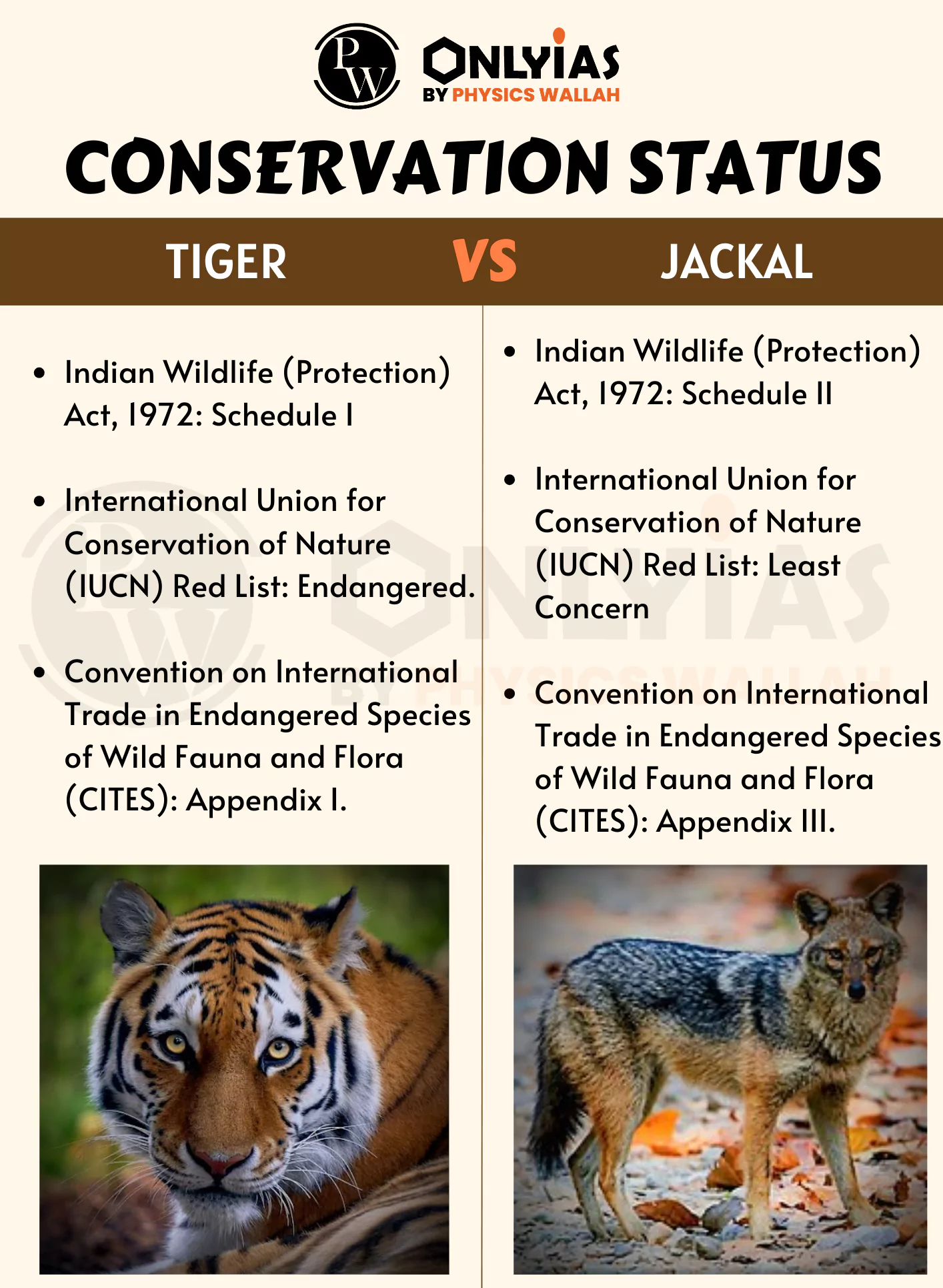Context:
- This article is based on an Editorial “When tigers and jackals get the same protection” which was published in the Hindu. A disproportionate number of species have been included in the new schedules of the Wildlife Protection (Amendment) Act, 2022, without an objective or replicable process, which is likely that everyone could face potential effects to some degree.
What is the Wildlife Protection Act amended 2022?
- Protection: The Act seeks to increase the species protected under the law and implement CITES.
- Penalty: The penalties have also been increased for general and specially protected animals’ violations.
- Reduction in Categories: The number of schedules has been reduced to four:
- Schedule I: Contains animal species enjoying the highest level of protection
- Schedule II: For animal species subject to a lesser degree of protection
- Schedule III: For protected plant species
- Schedule IV: For scheduled specimens under CITES
- The Act permits the use of elephants for ‘religious or any other purposes’.
Issues for Conservation
- Listing regards Conservation: There is not a clear connection between endangerment and conservation. The new Act aligns itself with CITES, and includes the CITES appendices as well.
- Effects of Listing of Species:
- Impact on Resource Allocation: Listing innumerable species means that it is unclear where resources should be allocated on the basis of this list.
- Example: The same level of protection is offered to tigers and jackals, to the great Indian bustard and common barn owls, etc.
- Contrary Consequences: Often with respect to law, every action has contrary consequences.
- Example: Instead of promoting conservation, the Tree Preservation Acts of Kerala and Karnataka, resulted in reduction of planting native trees, and promoted exotics such as Silver Oak, that they can cut any time they need to.
Impact on People
- Threat to Safety: Various Schedule 1 species like crocodiles, leopards, etc pose enormous physical, mental and economic harm to people. And yet Wildlife Protection Act says for ‘co-existence’.
- Disregard for the Farmers and Cultivators: The new Wildlife Protection Act has added wild pigs and nilgai to Schedule 1, which means the States have now allowed limited culling of problematic animals and may not be able to retain that policy.
- Lack of Consideration of Science or Society: The Wildlife Protection Act has a restrictive view on hunting and the use of animals. Regulated use should be considered when animals are abundant, at least to support the livelihoods of local communities.
Impact on Research & Data Updation
- Impact to Research: The paperwork involved in getting permits for research is tedious and time consuming and results in debilitating effects on research.
- Upload on International Portal: It is difficult to upload the ‘data’ to an international portal such as e-bird.

Also read: Tiger Reserves in India 2023, List(Updated), Map, Schemes, Objectives
The Path Ahead
- All the above mentioned issues need to be attended to, with different degrees of urgency.
- Those whose lives are at stake need to be safeguarded first.
- Any related management actions need to be prepared as per ecology, species biology, and context.
- Need of research or at least regular monitoring by independent agencies.
- Need to have such policies that prevent negative consequences for the very communities that are exploited by associated actions like research by scientists.
Conclusion:
The amendments to the Wildlife Protection Act in 2022 raise concerns over the indiscriminate inclusion of species, necessitating a careful reassessment to align conservation efforts with ecological realities and mitigate unintended consequences.
| Prelims Question (2020)
If a particular plant species is placed under Schedule VI of The Wildlife Protection Act, 1972, what is the implication?
(a) A license is required to cultivate that plant.
(b) Such a plant cannot be cultivated under any circumstances.
(c) It is a Genetically Modified crop plant.
(d) Such a plant is invasive and harmful to the ecosystem.
Ans: (a) |
![]() 18 Oct 2023
18 Oct 2023

